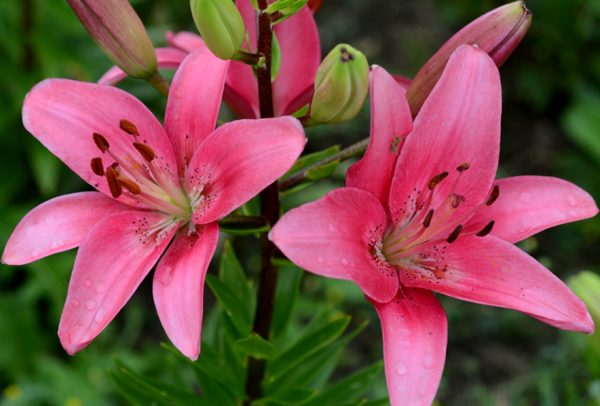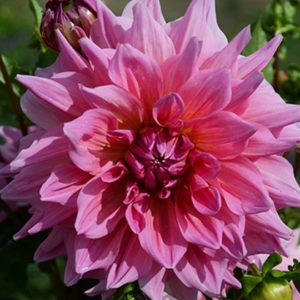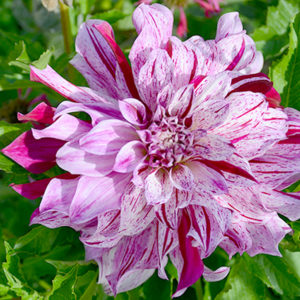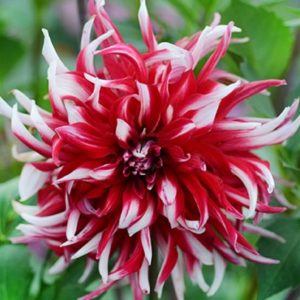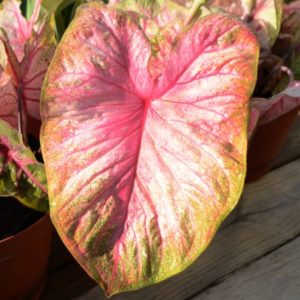Description
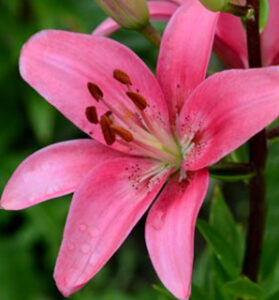 Asiatic Lily,
Asiatic Lily,
Vermeer
In the horticulture world of today there are 7 major lily divisions: Asiatic, Martagon, Candidum, American Hybrids (Turk’s Cap), Longiflorum, Trumpet Hybrids and Oriental Hybrids. Asiatic Lilies are the most popular lilies grown today, and since the mid-20th century, more development work has been done on this group of lilies than all the rest. Most of the Asiatics available today have in their lineage the DNA of one of the greatest species lilies of all time, L. regale. L. regale was discovered in 1903 by Ernest “Chinese” Wilson, the Englishman who became the Director of The Arnold Arboretum, one of America’s most prestigious horticultural assets.
In her marvelous book, BULB, Anna Pavord relates the story of the Wilson’s discovery as described by Wilson himself. Wilson came across the lily, by accident, in a remote, inaccessible area of western China known as the Min Valley. He wrote,
“There in narrow, semi-arid valleys down which thunder torrents, and encompassed by mountains composed of mudshales and granites, whose peaks are clothed with snow eternal, the Regal Lily has its home. In summer the heat is terrific, in winter the cold is intense, and at all seasons these valleys are subject to sudden and violent windstorms against which neither man nor beast can make headway. There, in June, by the wayside, in rock crevices by the torrents edge, and high up on the mountainside and precipice, this lily in full bloom greets the weary wayfarer. Not in twos or threes, but in hundreds, in thousands, aye, in tens of thousands.”
Wilson, on this specific collecting trip gathered thousands of lily bulbs. Three thousand bulbs made it back to England and were cultivated. L. regale was introduced and made available to the British public in 1905. Its instant popularity has not diminished since.
The Oriental Double Lilies like the Asiatic Double Lilies are not sustained in nature. They appear as opportunistic sports (chance mutations), but then revert back to single status in a year or two. Very few remain stable. The Doubles offered today are the few that have remained stable in gardens for years and so, are to be treasured, because they are genuinely precious gems from Nature.
Planting Lilies in Your Garden
Two important facts that must be remembered when cultivating lilies is that they cannot stand wet feet. They need well drained soil, and if they do not have this, they will rot quickly. The second fact is lily bulbs are never dormant. There is always some activity going on in the bulb. It can be strengthening due to seasonal exposure to cold, food transference from roots to scales and scales to the growing point or top growth production. Because of this constant activity, lilies must be handled gently at all times.
To plant lilies in the ground, dig holes that are 8-10 inches deep and dust the holes with bone meal (1/4 cup per bulb). Place the bulb in the hole, pointed side up, and fill the hole with soil. Lilies prefer organically rich soil, so mixing peat moss, compost, and/or dehydrated cow manure into the soil produces stronger plants and more flowers. The Oriental Trumpets and the Oriental lilies should be planted12-14 inches apart. The Asiatics should be planted 12-14 inches apart.
Once the lilies have emerged from the soil, you can fertilize with a blossom booster fertilizer, but you do not have to do this. You will still get beautiful blooms if you do not fertilize at all. Lilies also like their heads in the sun and their feet in the shade. This can be accomplished by planting low growing annuals like alyssum, ageratum or non-vining nasturtiums where you are also growing the lilies or planting the lilies beneath shrubs or perennials.
Planting Lilies in Containers
Lilies LOVE being grown in containers, but the containers must be deep – at least 10-12 inches. Use the soil mix described in detail in our Harvesting History YouTube video. Do not use prepared soil mixes.
The Best Soil Mix for Containers
Briefly the soil mix is 60% topsoil, 20% peat moss and 20% compost or dehydrated cow manure. You can plant according to the following chart:
| Type | 10-12 inch | 14 inch | 18 inch |
| Asiatics | 3 Bulbs | 5 Bulbs | 10 Bulbs |
| Orientals | 2-3 Bulbs | 3-5 Bulbs | 6-8 Bulbs |
| Oriental Trigrinum | 1 Bulbs | 1 Bulbs | 2 Bulbs |
Plant the bulbs 8 inches deep. Dust the hole with ¼ cup bone meal per bulb. Cover the bulbs with 8 inches of soil. Water heavily, but do not allow the pots to stand in water. Once the lilies have emerged from the soil, fertilize every two weeks with blossom booster fertilizer.
In the fall, when the top growth has died completely back, remove the dead growth and dust the surface of the soil with bone meal. Mulch with 2 inches of compost, if possible, or a mix of peat moss and dehydrated cow manure-5 parts peat moss to 1 part manure.
Make sure you water your lilies throughout the summer. Do not allow the pots to dry out.

